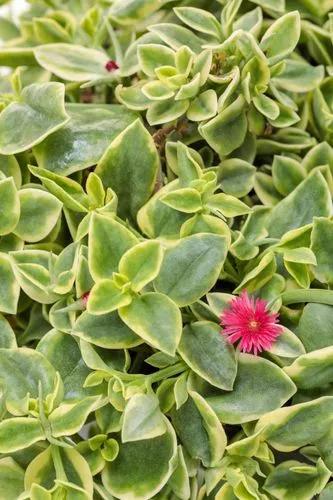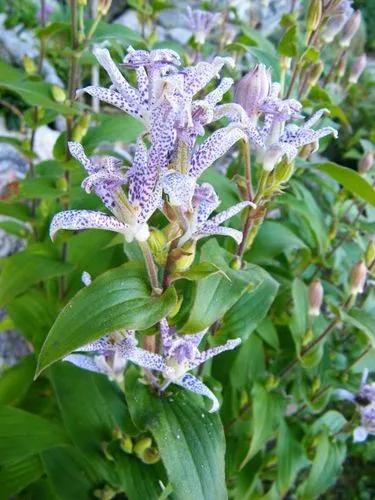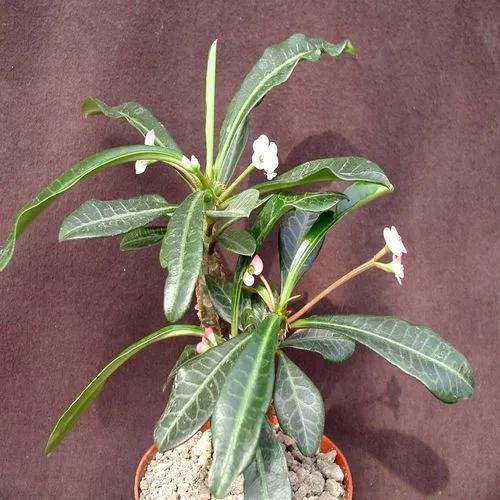The leaves are alternate and often vary in shape on a single plant, with larger, broader leaves at the base of the stem and smaller, narrower leaves higher up; the leaf margin may be either entire or serrated (sometimes both on the same plant). Many species contain white latex in the leaves and stems. The flowers are produced in panicles (sometimes solitary), and have a five-lobed corolla, typically large (2–5 cm or more long), mostly blue to purple, sometimes white or pink. Below the corolla, 5 leaf-like sepals form the calyx. Some species have a small additional leaf-like growth termed an "appendage" between each sepal, and the presence or absence, relative size, and attitude of the appendage is often used to distinguish between closely related species. The fruit is a capsule containing numerous small seeds. Campanula species are used as food plants by the larvae of some Lepidoptera species including common pug (recorded on harebell), dot moth, ingrailed clay (recorded on harebell), lime-speck pug and mouse moth.
Uniflora Freedom Bell Care
Campanula Uniflora



What is the plant
How to Care for the Plant

Water

Prefers a well lit, indoor position, free from draughts. Suitable for positions with some direct sunlight. Water sparingly to keep soil moist, but not wet, allowing to dry out partially between waterings.

Pruning

Ocassionally

Fertilizer

Feed bi weekly with liquid fertilizer
Ease your plant care routine with PlantIn's personalized system.

Popularity

3 people already have this plant 7 people have added this plant to their wishlists
What's wrong with your plant?
Related Plants
Discover more plants with the list below
Popular articles






